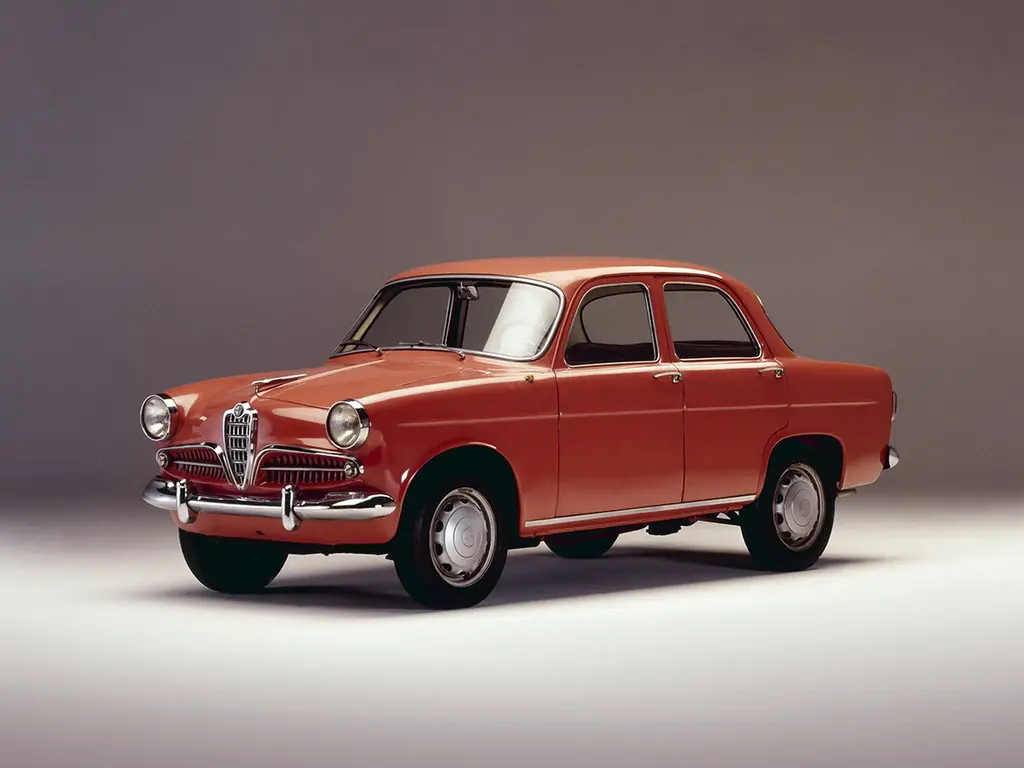In the spring of 1955, as Italy emerged from post-war reconstruction, Alfa Romeo unveiled a car that would redefine the brand and revolutionize the European automotive landscape. The Giulietta wasn’t just another sedan – it represented Alfa Romeo’s bold transition from exclusive luxury to attainable excellence, without compromising the marque’s sporting heritage.
This milestone in automotive history marked the moment when Alfa Romeo’s racing pedigree became accessible to the rising middle class. Through its 1290cc heart and sculptured lines, the Giulietta spoke to a generation eager to embrace the romance of Italian motoring.
Engineering That Set Standards
The Giulietta’s 1.3-liter aluminum engine wasn’t just another power plant – it was a masterpiece of efficiency and innovation. Its twin-cam architecture and hemispherical combustion chambers delivered 70 horsepower, impressive for its displacement. The engine’s willingness to rev and its distinctive exhaust note became hallmarks of the Alfa Romeo driving experience.
“My father’s 1957 Giulietta taught me what driving was meant to feel like. The way it sang through the gears, the precision of its steering – it wasn’t just transportation, it was pure joy in motion.” – James Morrison, vintage car collector
The 1962 introduction of the 1.6-liter engine brought even more character to the platform. This larger powerplant maintained the original’s eager nature while adding useful torque for real-world driving conditions.
The chassis matched the engine’s sporting pretensions. With its unibody construction and sophisticated suspension geometry, the Giulietta handled with a precision that embarrassed many dedicated sports cars of the era. At 144 km/h flat out and reaching 100 km/h in 15.6 seconds, it delivered performance that justified its sporting pretensions.
Design Evolution: From 750 to 101
The Giulietta’s evolution from the 750 to 101 series in 1959 showcased Alfa Romeo’s commitment to continuous improvement. Key changes included:
- revised front fender profiles for improved aerodynamics;
- enlarged glasshouse improving visibility and interior light;
- refined dashboard layout with better ergonomics;
- strengthened chassis components for enhanced durability;
- upgraded braking system with improved thermal capacity.
These updates transformed a good car into an exceptional one. The 101 series retained the original’s charm while addressing practical considerations that made the car more livable day-to-day.
“Each modification to the Giulietta seems purposeful, like brushstrokes refining an already beautiful painting. The 101 series especially shows how Alfa Romeo listened to their customers while maintaining the car’s essential character.” – Robert Chen, automotive historian
The interior embodied Italian design philosophy – simple yet sophisticated. Every control fell naturally to hand, and the large Veglia instruments provided clear information without unnecessary embellishment.
Legacy of Innovation
The Giulietta’s influence extended far beyond its production run. Its technical solutions became blueprints for subsequent Alfa Romeo models, while its market positioning strategy proved that premium brands could successfully target broader audiences without diluting their appeal.
Consider these lasting contributions to automotive development:
- pioneering use of aluminum in mass-produced engines;
- successful integration of race-derived technology in road cars;
- demonstration that sport sedan packaging could appeal to mainstream buyers;
- proof that performance and practicality weren’t mutually exclusive.
The Giulietta’s racing success in period events further cemented its reputation, proving that showroom models could compete effectively with minimal modification.
The Essential Character
The Giulietta wasn’t just about numbers and specifications – it created experiences. From the mechanical symphony of its engine to the precise action of its controls, every interaction reinforced its special nature.
| Pros | Cons |
|---|---|
| Revolutionary twin-cam engine with excellent power delivery | Limited parts availability in modern times |
| Sophisticated handling characteristics ahead of its era | Rust-prone body panels require vigilant maintenance |
| Timeless styling that influences designs today | Restoration costs can be significant |
| Strong enthusiast community support | Certain mechanical components require specialist knowledge |
| Investment-grade collectibility | Original specifications can be challenging to maintain |
| Excellent driving dynamics for its period | Limited modern safety features |
| Practical four-door configuration | Fuel system sensitivity to modern gasoline formulations |
The Giulietta remains more than just a classic car – it represents a pivotal moment when performance, style, and practicality converged in an accessible package. Its influence continues to echo through automotive history, inspiring enthusiasts and designers alike.

